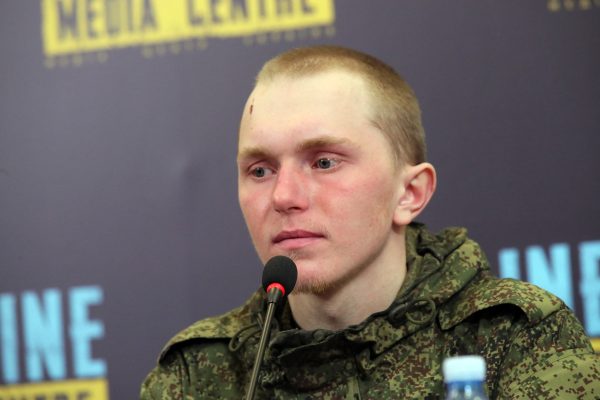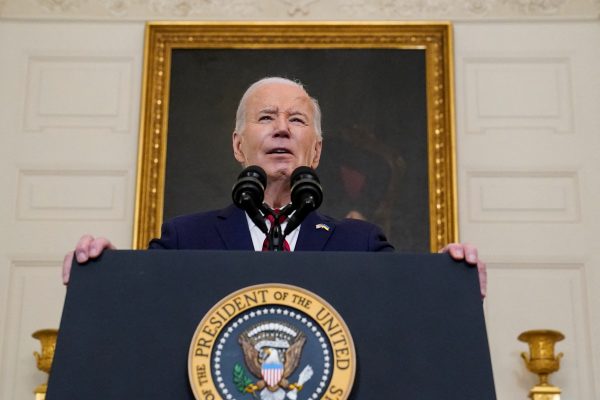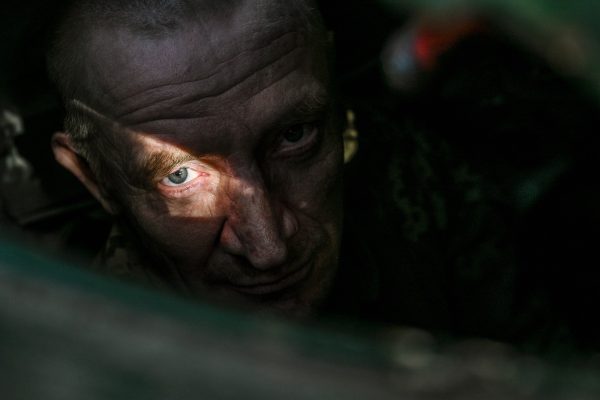Over the past months, the war in Ukraine has narrowed down to several key points, mostly in the eastern oblasts. The conflict hasn’t become any less intense but has become a bloody stalemate. One of the main battles currently being fought around the eastern city of Bakhmut is reminiscent of the battle of Verdun in France in 1916: a long, deadly, and cruel battle in which each contested square kilometer is won or lost at an enormous cost in lives. This may be the bloodiest battle since the beginning of Putin’s war against Ukraine.
To be sure, Moscow has been able to slowly gnaw at Ukrainian defensive lines in this region. The Russian army and supporting “auxiliaries” — including the now infamous Wagner mercenaries — have made some progress towards surrounding Bakhmut. After capturing the small neighboring town of Soledar, they continued to push forward in an effort to encircle the city, attacking from the north, east, and south, with a particular focus on the city’s main supply lines. House-to-house combat took place in Soledar, and is taking place east of the Bakhmutka river, which runs through the eponymous city.
But this stalemate won’t last. Both sides are preparing for a much-anticipated set of spring offensives and counter-offensives. On the Russian side, it’s clear that the Kremlin is laying the groundwork for a renewed push, although the nature, scale, and goal of the offensive remain unclear. The recent leadership change at the very top of the Russian military, with the appointment of General Valery Gerasimov as the head of Russian forces in Ukraine, suggests Moscow wants to once again roll the dice on another offensive. As we’re fast approaching the second year of what was supposed to be (in Vladimir Putin’s mind) a short military campaign, Gerasimov’s appointment hints at frustrations of Russian leaders. By appointing one of his “star” generals as the head of Russian forces in Ukraine, Putin likely hopes to break the stalemate. Ukrainian intelligence has also been warning that such an offensive was coming, suggesting it may start in the coming weeks, if not days.
But this doesn’t mean that all of the wild speculations about the nature of the Russian push will materialize. Some of what has been predicted is unrealistic. First among them is the belief that Russia may be planning a new attack against Kyiv or against Western Ukraine from nearby Belarus. The massing of Russian troops in Ukraine’s northern neighbor isn't remotely comparable to last year’s prelude to the battle of Kyiv (which ended in Russian defeat.) There are not nearly as many units now and not nearly as much equipment (it has lost more than 9,000 tanks and other vehicles in the past year and approaching 200,000 men killed and wounded), making it unlikely that Russia will again attempt to capture the Ukrainian capital.
There has also been speculation that the Kremlin would like to fill its depleted ranks with forces from its Belarusian ally. However, the possibility that Belarusian forces will join in, though it should not be completely ruled out, comes with a set of significant risks for both countries. Doing so would be a fairly desperate gamble. The probability that Belarusian involvement would tip the scale in Moscow’s favor is low, while the risk that direct Belarusian participation in the war would cause the demise of Putin’s ally, the dictator Aliaksandr Lukashenka, is higher.
It follows, therefore, that in all likelihood, the next Russian offensive will still take place in Eastern Ukraine’s Donbas region. Since revamping its operation, after withdrawing from the Kyiv region last year, Russia has put much more emphasis on “liberating” the remainder of the so-called “Donetsk and Luhansk People’s Republics.” But even this more limited objective has proven difficult to achieve and would require additional resources.
According to Ukrainian intelligence, Russian forces are regrouping along several axes in Eastern Ukraine, namely near Kupyansk and Lyman to the north, Avdiivka in the center, as well as Vuhledar and Novopavlivka in the south. There are already early signs of a Russian offensive in the northernmost parts of the frontline in Kharkiv and in parts of the Luhansk oblast. This could point to another effort to carry another “pincer move” from the north, east, and south, hoping for a collapse of the Ukrainian army (estimates suggest Russia has perhaps 250,000 men in reserve and ready to join the fight.) But these pincer movements have always looked better on paper and in the minds of Russian military planners and analysts than on the muddy reality of the battlefield.
It is more likely that the Russian offensive will materialize in a more limited set of attacks, similar to those seen last summer. At that time, Russia made slow but steady progress toward the towns of Severodonetsk and Lysyschansk before capturing them. Chances are high that we’ll see a similar push rather than Blitzkrieg-like advances that would drastically change the dynamic of the war.
This doesn’t mean that such an offensive wouldn’t be dangerous for Ukraine. We’re once again in one of these “crunch” periods, when a set of factors may temporarily play against Ukraine. Most importantly, it will take weeks (and most likely months) before Ukraine can deploy sufficient numbers of the tanks and infantry fighting vehicles gifted by the West to have an impact on the ground. The timing is important, as this also means Ukraine will first have to weather a Russian offensive before considering a counter-attack. Ukraine will also have to quickly train crews and absorb a mosaic of different weapon systems, which is a challenge in itself.
To be clear, for a country that had been refused NATO membership before the war in part because it was not up to the alliance’s standard, Ukraine has fared very well in making the transition away from Soviet/Russian-made systems (while fighting an existential war). It also successfully managed to bounce back and regain the initiative last year, under similar circumstances, after the fall of Severodonetsk.
But relying on past precedent is risky. A lot depends on Ukraine’s ability to continue to retake territory and not let the conflict return to the stalemate in Eastern Ukraine that it was fighting before the all-out 2022 invasion.
As one high-ranking officer of a NATO country told me, in order to achieve an eventual victory through warfare or diplomacy, it’s critical that Ukraine be seen as “winning. In a conflict that is becoming a long war, the impression of progress (or not) will impact Western military aid, which in turn will impact Ukraine’s ability to pursue its goal of fully restoring sovereignty over all its territory.
Michael Horowitz is a geopolitical and conflict analyst, as well as the head of the analyst team at Le Beck International. As such, he and his team advise multiple companies and NGOs operating in Ukraine following Russia’s invasions. Michael’s commentary and analysis can also be found in multiple international and regional outlets, including media outlets like the Washington Post, the Wall Street Journal, BBC, NBC, AP, and others.
Europe’s Edge is CEPA’s online journal covering critical topics on the foreign policy docket across Europe and North America. All opinions are those of the author and do not necessarily represent the position or views of the institutions they represent or the Center for European Policy Analysis.





